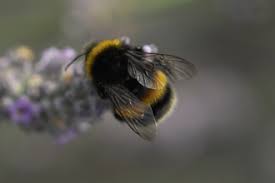
The psychologist and social scientist Jonathan Haidt has stated that human beings are part bee. As well as the established habits we have hung on to from our ape ancestors, of wanting to stand out and be recognised by the alpha in the group, we also have the bee habit of collaborating and doing what is best for the hive.
You can clearly see both patterns of behaviour in most teams. There’s a desire to fit in and work towards a common goal (bee) and also a simultaneous drive to stand out and be one of the favourites of the leader (ape). The capability of the team for high performance will depend on the balance of bee versus ape behaviour. As the coach to celebrity achievers Steve Peters has pointed out in The Chimp Paradox, too much chimp like behaviour is self destructive, and anyone who has witnessed too much leadership adulation in the workplace will be testament to the sheer waste of time and emotion that is expended in trying to be top chimp or ape.
Getting satisfaction from being a part of a high performing team, as opposed to getting wrapped up in being noticed by the boss, is crucial to happiness at work and to better results. In a bee culture each member rises. In the ape culture a few individuals rise by stepping on their colleagues.
However bee culture is not only about conforming and fitting into a single work ethic.
When honeybees are foraging most of them follow the “waggle dance”. But not all of them. The “waggle dance” is a sophisticated form of communication used by bees to convey information about the direction and distance of food sources. When a forager bee finds a rich source of nectar she returns to the hive and performs a dance. The dance involves a series of movements that encode information about the angle relative to the sun and the distance to the food sources. Most of the forager bee’s colleagues set off for the destination that she has described through the dance.
However approximately 10-15% of bees do not follow the dance. Instead they set off on their own. They are independent of the hive, and play a vital role in finding new and unexplored sources of nectar, which are crucial if and when the established sources are depleted. In addition they help to create increased genetic diversity among the plants that they visit through cross pollination. Overall this behaviour ensures that the hive can efficiently exploit known resources while also discovering new ones.
Strategic advice should follow two paths on a clients’ business. One is to make sure that the plan makes the most of existing and established sources of growth. To leverage those established rules of growth from Byron Sharp and the beliefs enshrined in Binet and Field’s The long and the short of it. In essence to follow the Binet, Field and Sharp Waggle dance.
But in addition, in a world where media is changing faster than ever, the strategy must also follow an independent path, go beyond the heritage herd practices and also explore new and unexplored sources of growth.
Don’t put all the eggs in one basket, or send every bee after one source of nectar. If you only follow yesterday’s rules of marketing you risk under delivering potential growth and face being outsmarted by the competition.
Be more bee, but make sure that you are exploring independent and innovative sources of growth.